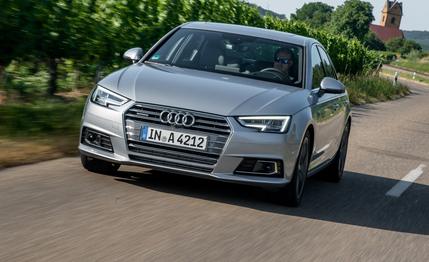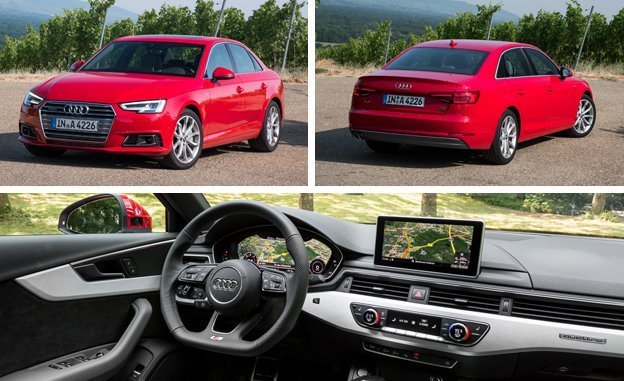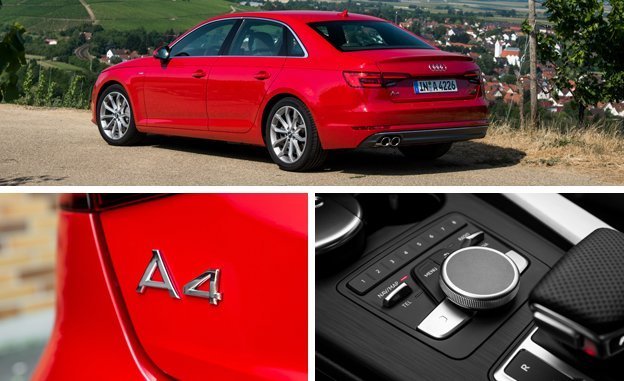
 Prototype Drive
Prototype Drive
When the latest Audi Q7 broke cover last winter, the SUV’s styling proved to be a very hot topic for discussion, and that’s happened again with another new Audi. This time, it’s the A4’s turn, as the all-new 2017 iteration that debuted last month has plenty of folks wondering why it looks so similar to the outgoing car.
Indeed, it must take some kind of perverted effort to throw away everything from a car and give it a new platform, new engines, new transmissions, a new chassis, and a new interior . . . and still make the sheetmetal look almost exactly the same as the previous model’s. Or, to be brutally honest, the same but 10 percent more boring.


Well aware of the general indifference that greeted the debut of the 2017 A4, Audi’s technical boss Ulrich Hackenberg decided to bring us along on a final validation drive. Think of it as Audi trying to recapture the momentum lost by the styling and redirect the focus on the car’s engineering, equipment, and general goodness.
It was an excellent call. At least at this juncture, the A4 is very good, and it’s poised to be a real threat to BMW’s just-facelifted 3-series, Jaguar’s new XE, and the Mercedes-Benz C-class when you consider the A4 as a whole in terms of lineup, technology, and more. The prototypes we drove suggest the 2017 A4 no longer feels like a small front-wheel-drive car masquerading as a biggish one, and it clearly follows the example set by the new Q7, which is to say it combines control, finesse, and precision into a versatile, distinctly Audi sort of driving character. In addition, the A4’s lower center of gravity and reduced mass mean it responds more quickly to inputs than the Q7, darting for apexes and feeling altogether more athletic.
The comparison between SUV and sedan is odd, but it’s apt, as the new A4 shares its modular MLB Evo architecture with its larger cousin. The A4 is 186.1 inches long overall, 72.5 inches wide, and 56.2 inches high. (For comparison, the new A4 is 1.6 inches longer, 1.3 inches wider, and 0.6 inch lower than the C-class.) And there are more mores. There’s 0.9 inch of additional rear legroom, and front headroom and shoulder room also have increased.
Hackenberg’s determination to introduce a familial feel to the ride-and-handling package leaves the car feeling a bit more like a discreet athlete of Jaguar mythology than anything of Audi’s. There’s a bit of mix-and-match here as well, with Audi offering the car with dampers in your choice of standard or Sport tune, in addition to two different adaptive systems. The sedan is also said to be some 260 pounds lighter than its predecessor, despite being stiffer.


The powertrains we’ll see here in America include a pair of 2.0-liter turbocharged gasoline engines in 190- and 252-hp strengths; the former is engineered to operate on the Miller cycle, which is intended to imbue it with diesel-like efficiency. (More info here.) To that end, on the extremely optimistic European cycle, the Miller engine is said to achieve 49 mpg combined. You can expect the mileage numbers to be far more realistic once the EPA has its say, but feel free to examine it in relation to the closest comparative BMW and Mercedes models, the 320i and the C300; they manage 44 and 37 mpg on the same Euro fuel-economy test. There won’t be a V-6 available in the A4 range in the U.S., with Audi instead waiting for the 2018 S4 to deliver more cylinders in the form of that car’s updated supercharged V-6 engine.
Europe will see additional diesel engines, including powerful V-6 models that were thick on the ground during our validation drive. We started our experience with the base V-6 TDI, which displaces 3.0 liters and makes 218 horsepower and 295 lb-ft of torque, and it’s quiet enough at idle that you’d struggle to peg it as a diesel from inside the car—a good sign for the four-cylinder TDI coming our way. We lit the engine via a console-mounted start button, a location that carries over from the current car and one which Hackenberg demands for visibility purposes. He ordered the column-mounted indicator and wiper stalks to be raised higher for the same reason.